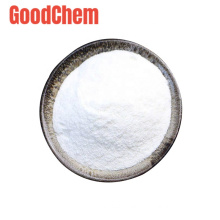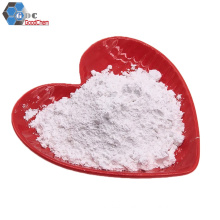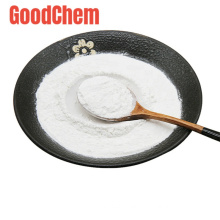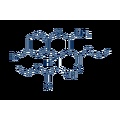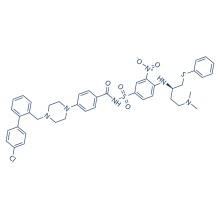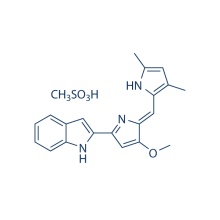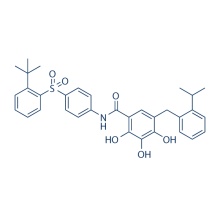.cp_wz tabla {borde superior: 1px sólido #ccc; borde izquierdo: 1px sólido #ccc; } .cp_wz table td {borde derecho: 1px sólido #ccc; borde inferior: 1px sólido #ccc; padding: 5px 0px 0px 5px;} .cp_wz table th {border-right: 1px solid #ccc; border-bottom: 1px solid #ccc; padding: 5px 0px 0px 5px;} \ n Peso molecular: \ n 409.23 HA14-1 es un ligando no peptídico de un bolsillo de superficie Bcl-2 con IC50 de ~ 9 μM. \ n Actividad biológica HA14-1 es una molécula pequeña y ligando no peptídico de un bolsillo de superficie Bcl-2 con IC50 de aproximadamente 9 µM. HA14-1 induce la apoptosis de las células HL-60 de una manera dependiente de la dosis a través de la activación de la caspasa. HA14-1 muestra efectos citotóxicos sobre las líneas de células B de linfoma folicular HF1A3, HF4.9 y HF28RA con LC50 de 4,5 µM, 12,6 µM y 8,1 µM respectivamente. HA14-1 induce la apoptosis de las células HF1A3, HF4.9 y HF28RA a través de caspasa y ROS. El tratamiento con HA14-1 (400 nM) no tuvo ningún efecto significativo sobre el crecimiento de tumores de glioblastoma en ratones inmunodeficientes. Pero HA14-1 (400 nM) aumenta el efecto del agente que daña el ADN etopósido (2,5 mg / kg) sobre el crecimiento del glioblastoma in vivo. Protocolo (solo como referencia) Ensayo de quinasa: [1]
|
Affinity determination
|
The binding affinity of organic compounds to Bcl-2 protein in vitro is determined by a competitive binding assay based on fluorescence polarization. For this assay, 5-carboxyfluorecein is coupled to the N terminus of a peptide, GQVGRQLAIIGDDINR, derived from the BH3 domain of Bak (Flu-BakBH3), which has been shown to bind to the surface pocket of the Bcl-xL protein with high-affinity. According to our molecular modeling studies and binding measurement using fluorescence polarization, the Flu-BakBH3 peptide binds the surface pocket of Bcl-2 with a similar affinity. Bcl-2 used in this assay is a recombinant GST-fused soluble protein. Flu-BakBH3 and Bcl-2 protein are mixed in the presence or absence of organic compounds under standard buffer conditions and are incubated for 30 min. The binding of Flu-BakBH3 to Bcl-2 protein is measured on a LS-50 luminescence spectrometer equipped with polarizers using a dual path length quartz cell (500 μl). The fluorophore is excited with vertical polarized light at 480 nm (excitation slit width 15 nm), and the polarization value of the emitted light is observed through vertical and horizontal polarizers at 530 nm (emission slit width 15 nm). The binding affinity of each compound for Bcl-2 protein is assessed by determining the ability of different concentrations of the compound to inhibit Flu-BakBH3 binding to Bcl-2.
|
Ensayo celular: [2]
|
Cell lines
|
HF1A3, HF4.9 and HF28RA cells
|
|
Concentrations
|
~25 μM
|
|
Incubation Time
|
20 h
|
|
Method
|
The cytotoxic effects of HA14-1 against different FL cell lines are determined by the MTT assay. Briefly, the cells (5000/well) are incubated in triplicate in 96-well plate in the presence or absence of HA14-1 for 20 h at 37 °C. Thereafter, the MTT solution is added to each well. After 4 h incubation at 37 °C, the optical density (OD) is measured by means of 96-well plate reader, with the extraction buffer as a blank. The following formula is used: percentage cell viability = (OD of the experiment samples/OD of the control) × 100. Sigmoidal dose-response curves are fitted to the mean cell viability plotted against log HA14-1 dose and lethal concentration 50% (LC50) values are calculated from the resulting curves using Prism 4.0 softw
|
Estudio con animales: [3]
|
Animal Models
|
Female Swiss nude mice bearing BeGBM xenografts.
|
|
Formulation
|
Free RPMI 1640-50% DMSO.
|
|
Dosages
|
400 nM
|
|
Administration
|
Inject at the site of cell injection.
|
|
Solubility
|
1% DMSO/30% polyethylene glycol/1% Tween 80,
30 mg/mL
|
|
* Please note that Selleck tests the solubility of all compounds in-house, and the actual solubility may differ slightly from published values. This is normal and is due to slight batch-to-batch variations.
|
Conversión de diferentes modelos de animales basados en BSA (valor basado en datos del Borrador de Directrices de la FDA)
|
Species
|
Baboon
|
Dog
|
Monkey
|
Rabbit
|
Guinea pig
|
Rat
|
Hamster
|
Mouse
|
|
Weight (kg)
|
12
|
10
|
3
|
1.8
|
0.4
|
0.15
|
0.08
|
0.02
|
|
Body Surface Area (m2)
|
0.6
|
0.5
|
0.24
|
0.15
|
0.05
|
0.025
|
0.02
|
0.007
|
|
Km factor
|
20
|
20
|
12
|
12
|
8
|
6
|
5
|
3
|
|
Animal A (mg/kg) = Animal B (mg/kg) multiplied by
|
Animal B Km
|
|
Animal A Km
|
Por ejemplo, para modificar la dosis de resveratrol utilizada para un ratón (22,4 mg / kg) a una dosis basada en el BSA para una rata, multiplique 22,4 mg / kg por el factor Km para un ratón y luego divida por el factor Km para una rata. Este cálculo da como resultado una dosis equivalente para ratas de resveratrol de 11,2 mg / kg.
|
Rat dose (mg/kg) = mouse dose (22.4 mg/kg) ×
|
mouse Km(3)
|
= 11.2 mg/kg
|
|
rat Km(6)
|
Información química
|
Molecular Weight (MW)
|
409.23
|
|
Formula
|
C17H17BrN2O5
|
|
CAS No.
|
65673-63-4
|
|
Storage
|
3 years -20℃Powder
|
|
6 months-80℃in solvent (DMSO, water, etc.)
|
|
Synonyms
|
|
|
Solubility (25°C) *
|
In vitro
|
DMSO
|
82 mg/mL
(200.37 mM)
|
|
Water
|
<1 mg/mL
(
|
|
Ethanol
|
82 mg/mL
(200.37 mM)
|
|
In vivo
|
1% DMSO/30% polyethylene glycol/1% Tween 80
|
30 mg/mL
|
* <1 mg/ml means slightly soluble or insoluble.
* Please note that Selleck tests the solubility of all compounds in-house, and the actual solubility may differ slightly from published values. This is normal and is due to slight batch-to-batch variations.
|
|
Chemical Name
|
(R)-ethyl 2-amino-6-bromo-4-((R)-1-cyano-2-ethoxy-2-oxoethyl)-4H-chromene-3-carboxylate
|
Calculadora de molaridad Calculadora de dilución Calculadora de peso molecular
Grupos de Producto : Apoptosis > Inhibidor de Bcl-2
